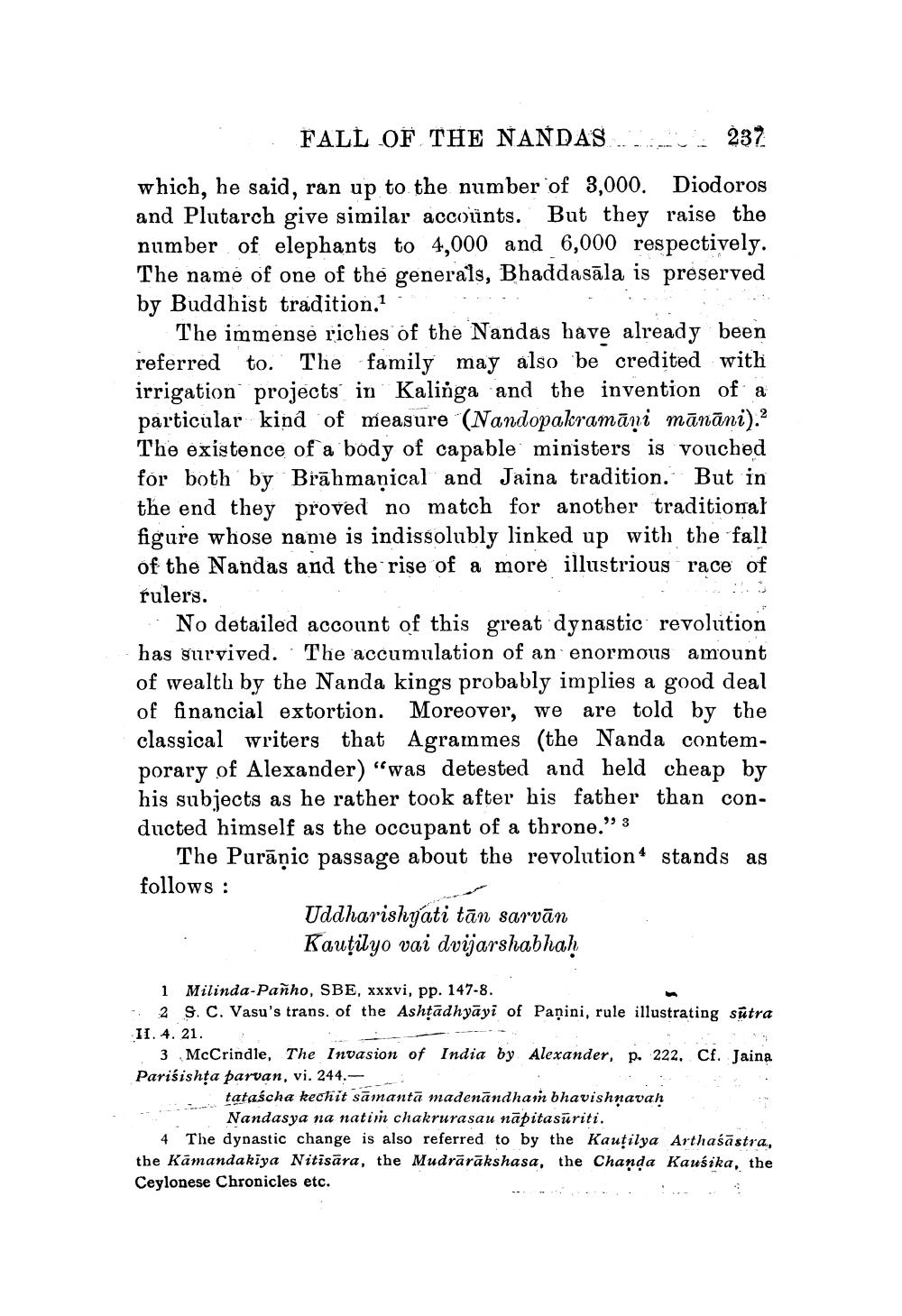________________
FALL OF THE NANDAS... 237 which, he said, ran up to the number of 3,000. Diodoros and Plutarch give similar accounts. But they raise the number of elephants to 4,000 and 6,000 respectively. The name of one of the generals, Bhaddasāla is preserved by Buddhist tradition.
The immense riches of the Nandas have already been referred to. The family may also be credited with irrigation projects in Kalinga and the invention of a particular kind of measure (Nandopakramāṇi mānāni). The existence of a body of capable ministers is vouched for both by Brāhmaṇical and Jaina tradition. But in the end they proved no match for another traditional figure whose name is indissolubly linked up with the fall of the Nandas and the rise of a more illustrious race of rulers.
- No detailed account of this great dynastic revolution has survived. The accumulation of an enormous amount of wealth by the Nanda kings probably implies a good deal of financial extortion. Moreover, we are told by the classical writers that Agrammes (the Nanda contemporary of Alexander) "was detested and held cheap by his subjects as he rather took after his father than conducted himself as the occupant of a throne." 3
The Purāṇic passage about the revolution* stands as follows :
Uddharishyati tān sarvān Kautilyo vai dvijаrshabhah
1 Milinda-Pañho, SBE, xxxvi, pp. 147-8. - 2 S. C. Vasu's trans. of the Ashțādhyāyi of Paņini, rule illustrating sutra II. 4. 21.
3 McCrindle, The Invasion of India by Alexander, p. 222. Cf. Jaina Pariśishța parvan, vi. 244.
tataścha kechit samantā madenandham bhavishnavan
Nandasya na natin chakrurasau nāpita sūriti. 4 The dynastic change is also referred to by the Kautilya Arthaśāstra, the Kämandakiya Nitisara, the Mudrārākshasa, the Chanda Kausika, the Ceylonese Chronicles etc.




